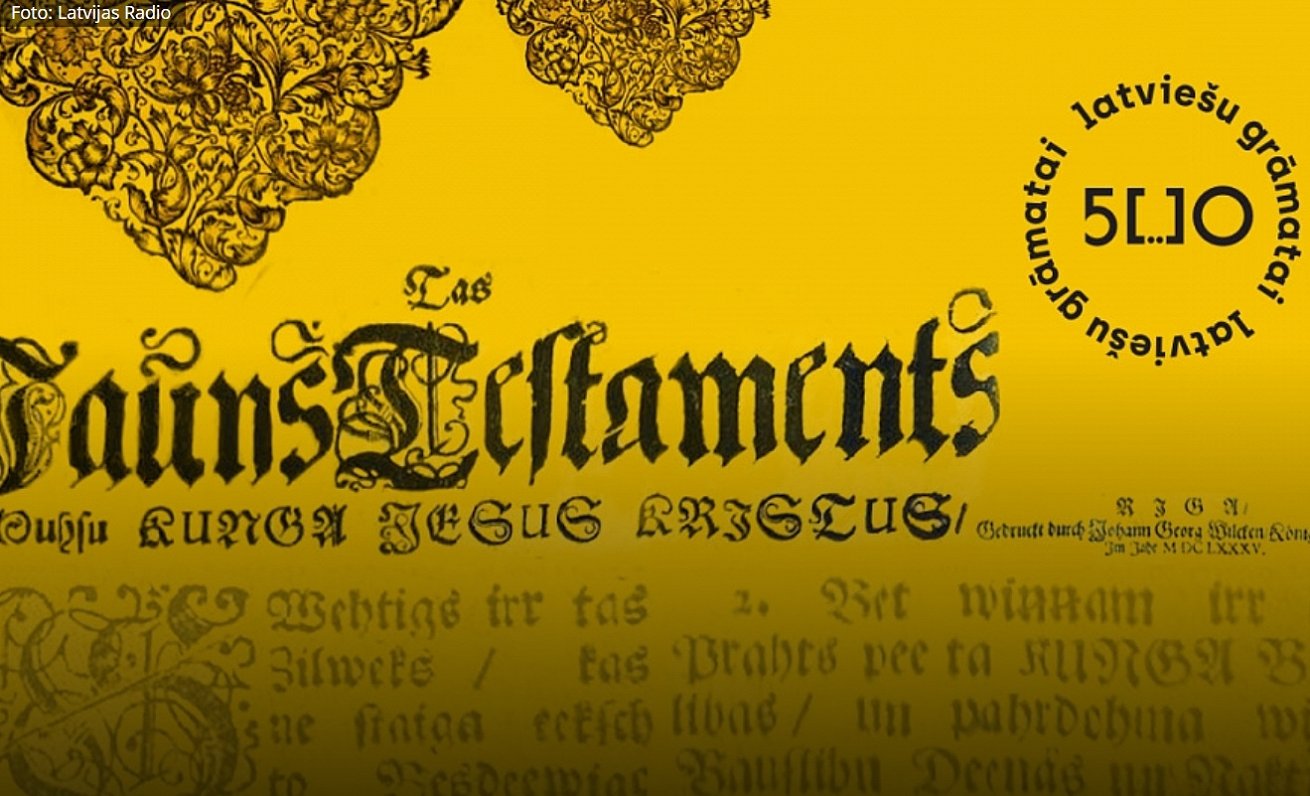More about the cycle of events can be discovered at the website https://www.gramatai500.lv and for more about the Latvian National Library and its constantly changing exhibitions and collections, visit: https://www.lnb.lv/.
Glück’s translation of the Bible – one of the cornerstones of the modern Latvian language
Bible translations have a special place in the history of many languages. For example, Martin Luther's translation of the Bible into German (1522–1546) was not the first, but it marked not only the period of the Church Reformation, but also a new era in the history of the German language.
The translation of the Bible (1541), organised by King Gustav Vasa, ushered in the so-called New Swedish period in the history of the Swedish language. The Kralice Bible (1579–1593) was the first complete translation of the Bible into Czech and the standard for the language for centuries to come. The list goes on. The Latvian translation of the Bible by Ernst Glück is also one of the cornerstones of the modern Latvian language.
Firstly, the text of the Bible is important in the Christianisation of every nation, usually some fragments have been translated long before the full text of the Bible. Translations of readings from the New Testament or pericopes – the Gospels and other passages from the New Testament – were also printed in Latvian as early as 1587 in the publication Evangelia und Episteln [The Gospel and Epistles]. These were repeatedly printed and edited in Lutheran handbooks in 1615, 1631, 1643, 1673.
However, there still was no full text of the Bible. This seemed especially important in Swedish-ruled Livland in the 17th century. Officially Lutheran Sweden also put effort into making the Bible available in the languages spoken there.
As early as 1662, Johannes Gezelius (1615–1690), then Superintendent of Livland, encouraged the idea of translating the Bible, and in 1664 the Synod of Pastors of Livland commissioned ten pastors to translate the Psalms, otherwise known as the Book of Songs of David as an example for other translations. We do not have evidence to show that anyone acted on this. In 1675, Jānis Reiters (c. 1632–1695/97) produced his example of a Bible translation. However, it was not until Johann Fischer (1633–1705) was General Superintendent of Livland that a translation actually materialised. But it needed someone who could do it.
Ernst Glück (1654–1705), born in Wettin in Saxony, arrived in Riga around 1675 and took on as his mission to translate the Bible into Latvian. Over the next five years, he travelled to Hamburg to further his knowledge of ancient languages and also learned Latvian. In 1681, a resolution was received from King Charles XI of Sweden supporting the Bible translation. Glück completed the translation in ten years, first translating the New Testament in 1681–1682, followed by the Old Testament. It is important to note, the translation was made from the original languages, Ancient Greek and Biblical Hebrew. The translation was accepted by a group of clergymen in Livland and Courland at their general meetings (1682–1683), but its printing took many years – from 1685 to 1694.
In the second half of the 17th century, the language similar to the dialects spoken in both Livland and Semigallia had already been firmly established as the basis of the phonetics and grammar of the written Latvian language.
However, the choice of orthography was a more complex issue, as there were several systems, which were not very consistent.
Glück understood and tried to solve these problems. This is evident in the Latvian version of the Bible. Moreover, the entire first edition of this Bible is not in one single script, since the earliest printed sections of the New Testament differ from subsequent ones. The differences that most clearly show the search for new ways in the development of the written Latvian language are evident in the Gospels of Matthew and Mark.
Here the so-called logical spelling principle is taken to its extreme – the attempt to spell homonymous grammatical forms differently, e.g. for the pronoun form tās, in the Singular Genitive it is spelled thas, while in the Plural Nominative and Accusative - tahs; the pronoun to in the Singular Accusative is written to, but in the Plural Genitive - tho; the pronoun tā in the Singular Genitive - tho; the pronoun tā in the Plural Genitive - tho; the pronoun tā in the Feminine Singular Nominative is written ta, while in the Masculine Singular Genitive – it is tha.
No doubt this spelling is difficult for both the writer and the reader, and, therefore, the language is much less complex in the other books of the Bible. Henceforth, only the adverbial form tà is consistently distinguished from the similar pronoun forms written ta, and the present form of the verb to be – irr from the participle ir, meaning 'also'.
Undeniably, the translation of the Bible was also an important contribution to the development of the lexicon of the written Latvian language. Until then, only the pericopes of the New Testament and a few books of the Old Testament had been translated into Latvian.
The translator therefore needed a new vocabulary, especially in the sections dealing with realities and events that were foreign to the Latvian lands.
It was in the Bible edition that, for the first time in the written text, supposedly vernacular words were used, such as: mazotne [childhood], ražens [fruitful], svārstīt [to swing], tēls [image], vajāt [persecute]. It is possible that Glück himself coined words such as apraksts [description], īslaicīgs [short-lived], liekulis [hypocrite], noraksts [transcript]. Borrowed words first used in the Bible are priesteris [priest], kamielis [camel]. The word pravietis [prophet], previously found written as prophets or provets, is written in a form close to its modern form. Of course, the translation also includes words that are no longer used in modern language, such as gadīgs – krietns [decent], īkstis – nieres [kidney], mātīce –sievasmāte [mother-in-law], miesloties – spēlēties [play], pult – krist [fall].
As in all Christian languages, a whole range of phrases have entered the Latvian language through the biblical text. Examples include: vilks avju drēbēs [wolf in sheep's clothing], pēc ģīmja un līdzības [in the image and likeness of], zemes sāls [salt of the earth], turēt sveci zem pūra [to keep a candle under the bushel], piedauzības akmens – [disgrace].
The Latvian Bible translation by Ernst Glück influenced the development of Latvian literature, culture and language. The publication established a principled agreement regarding the establishing of a uniform Latvian script, and the grammar of the written language was stabilised.
The translation contributed to the unity of the written language in the politically and administratively divided Lutheran Latvian lands (Swedish, later Russian, Livland and the Duchy of Courland) and created a stable basis for the further development of the language.

































